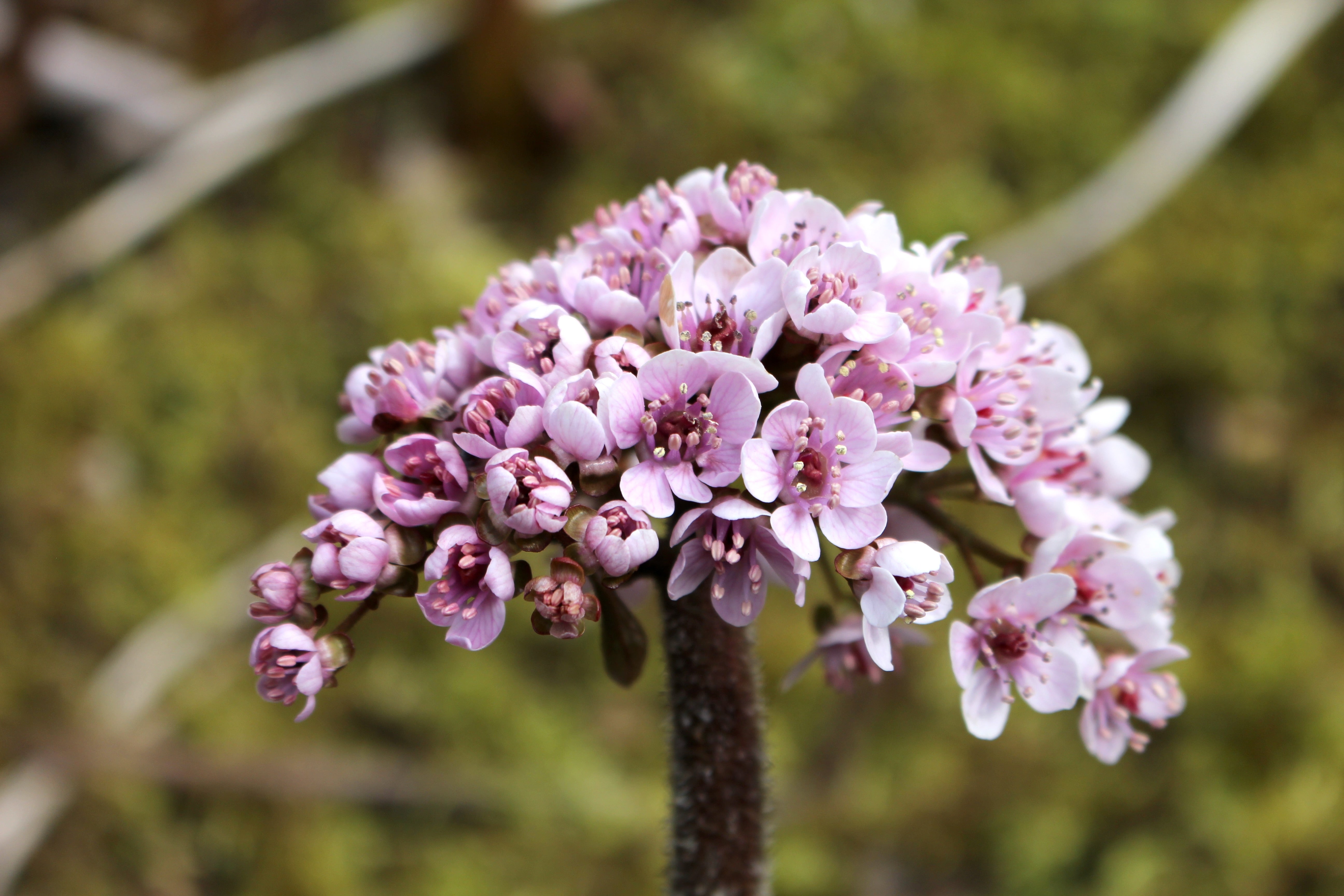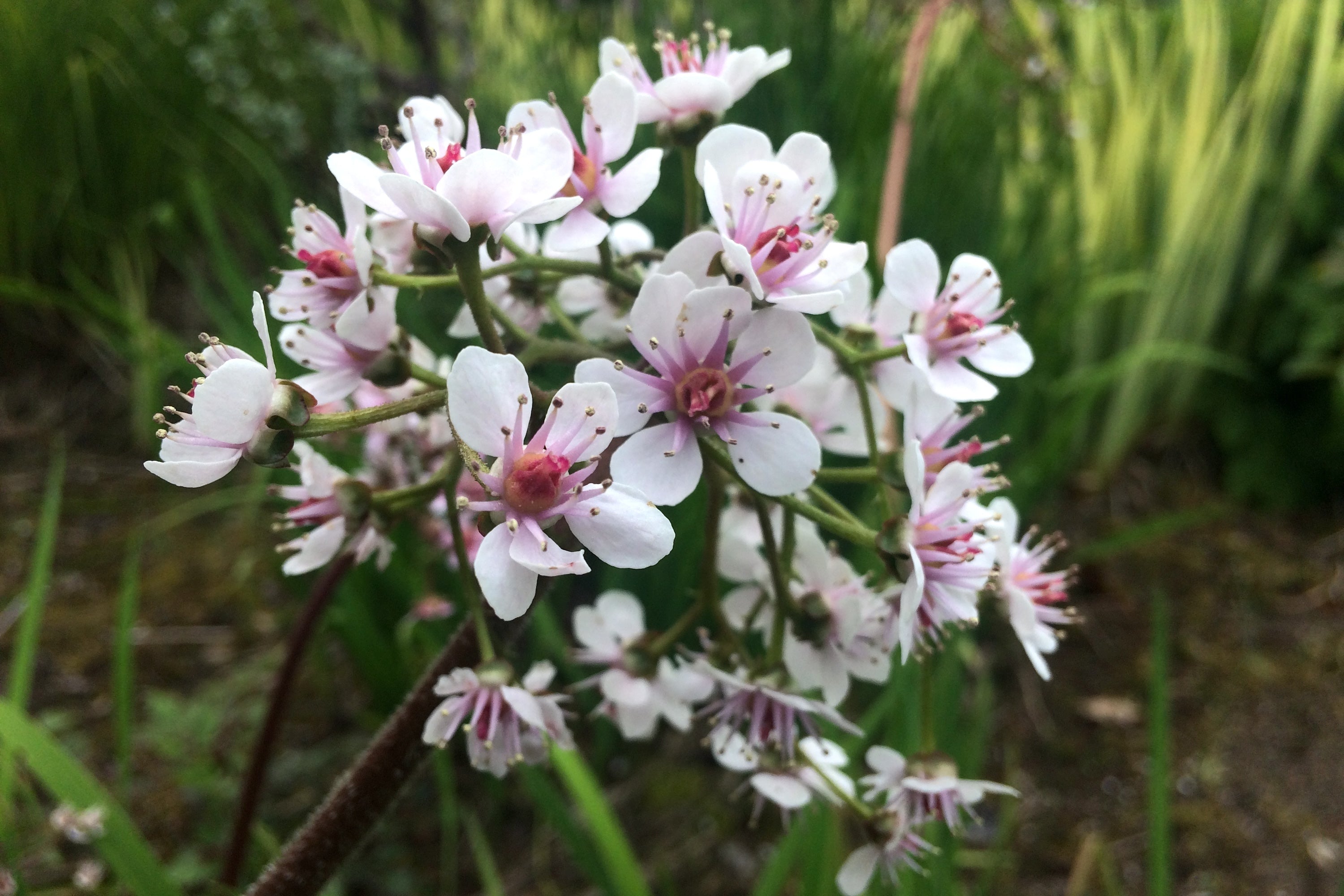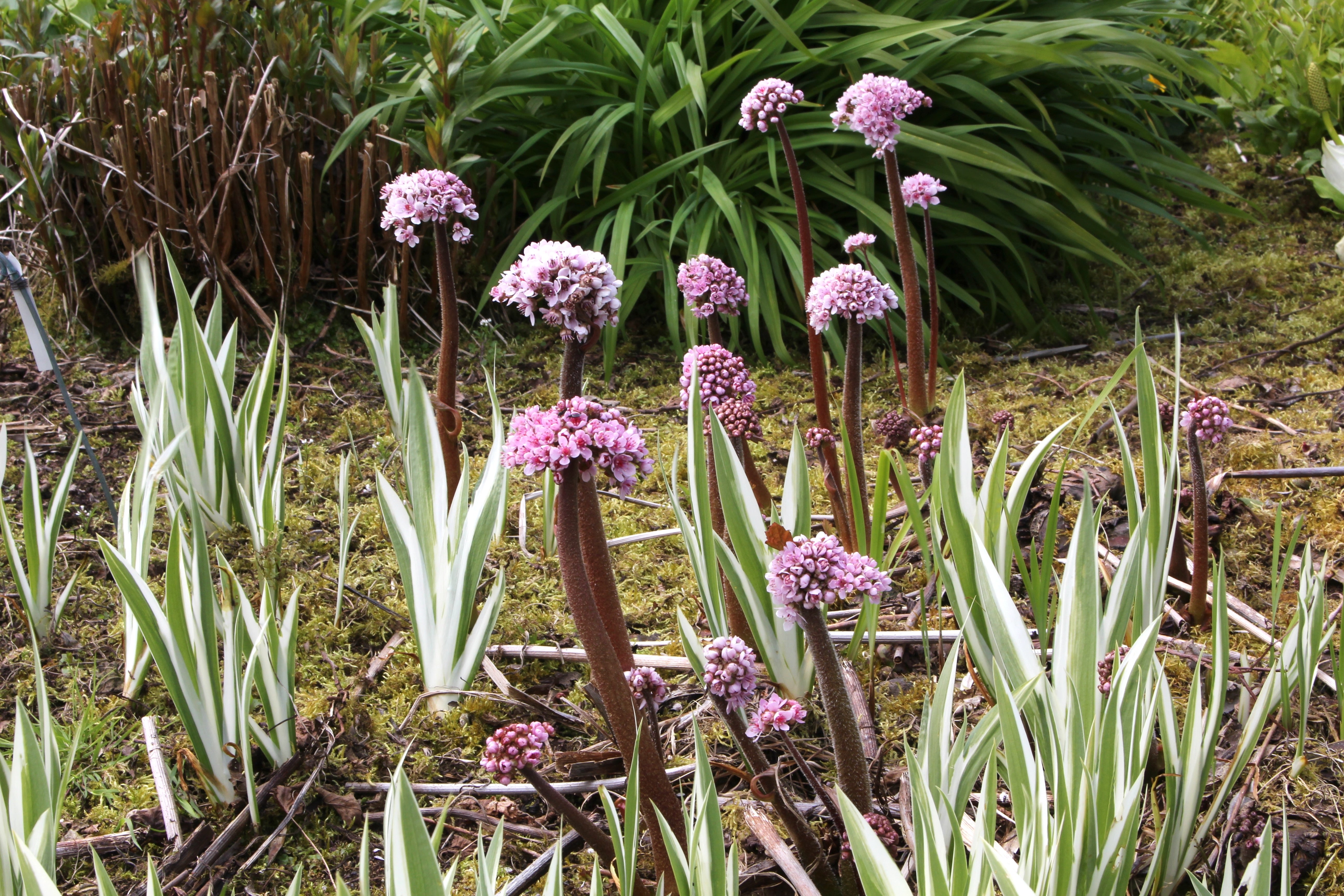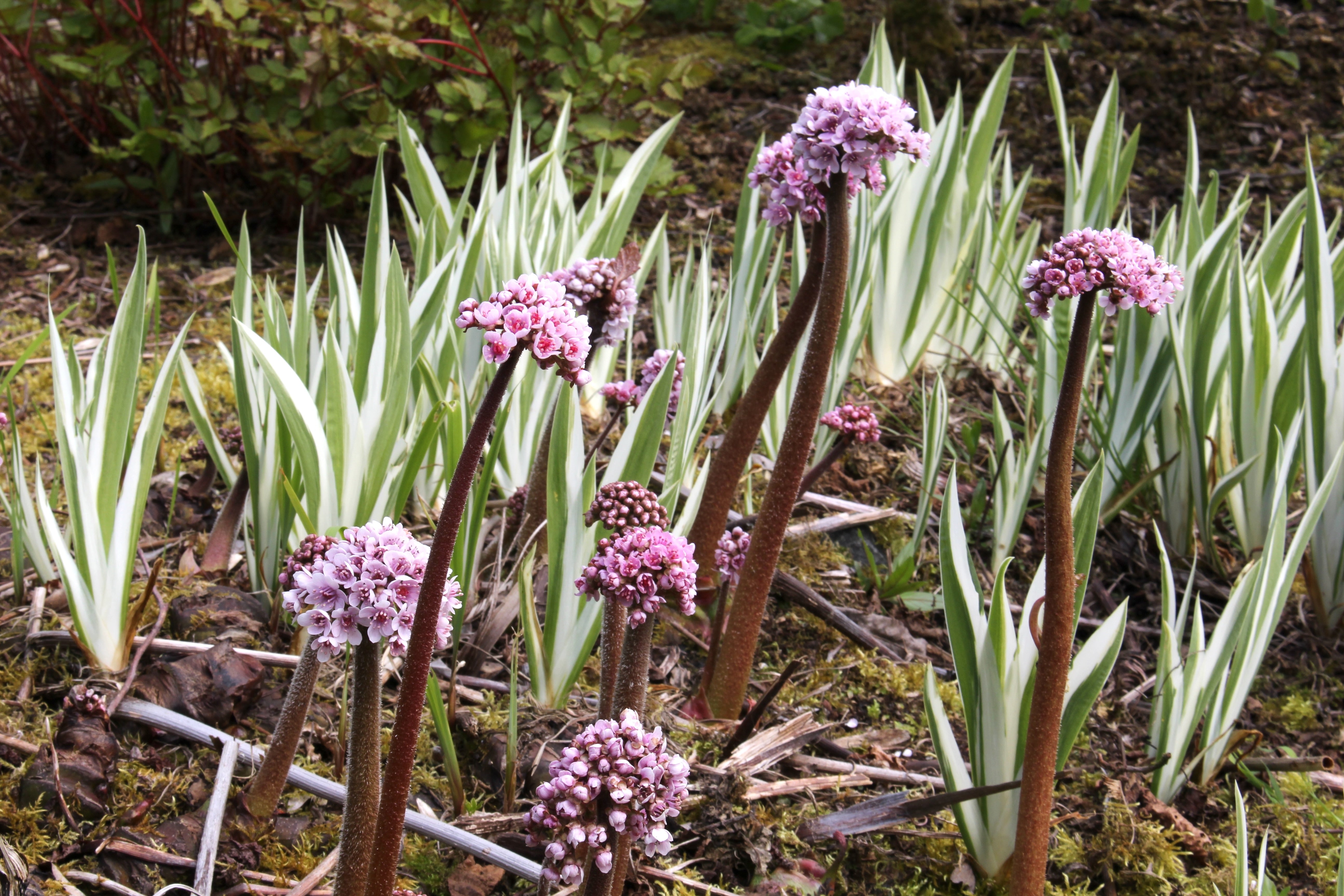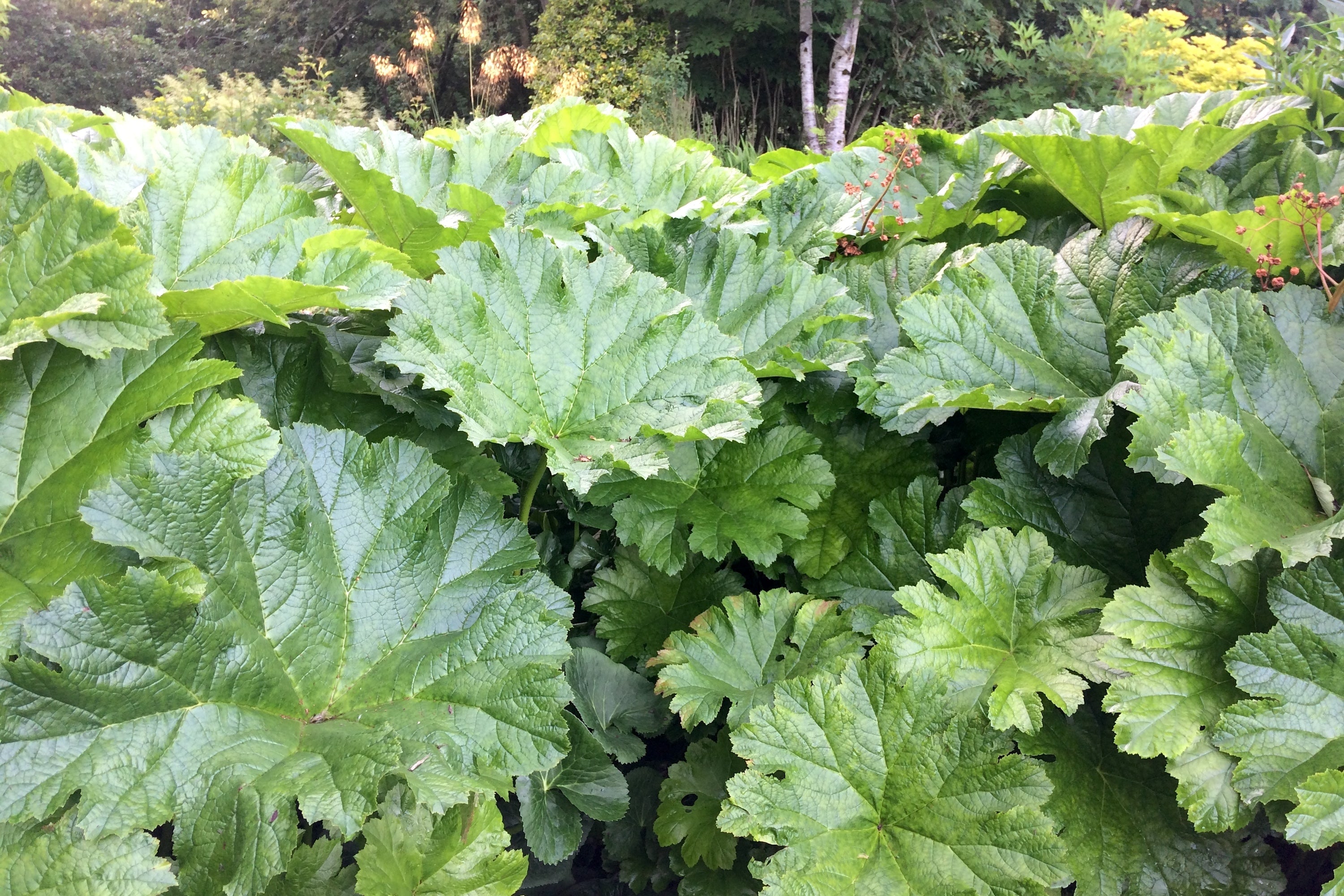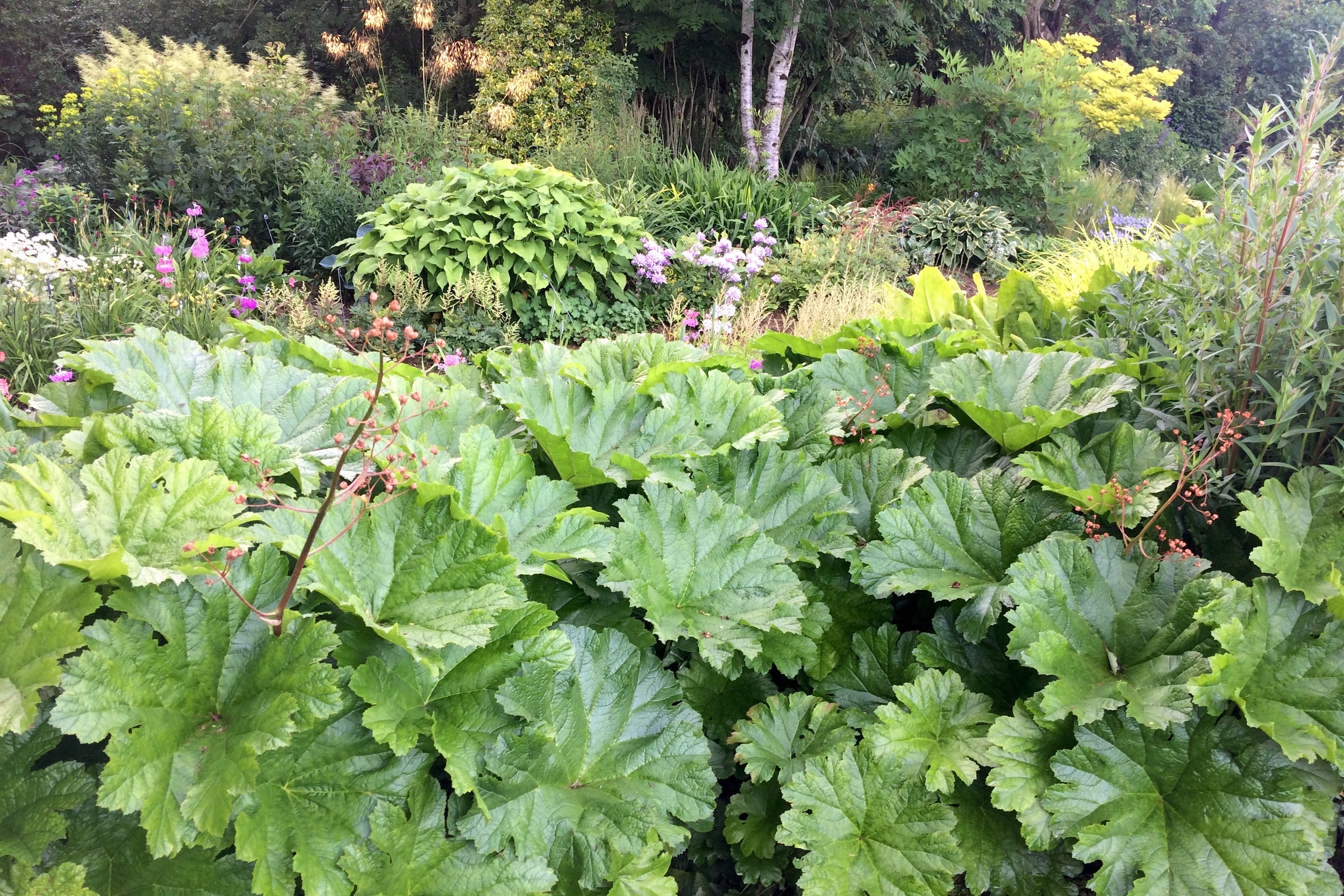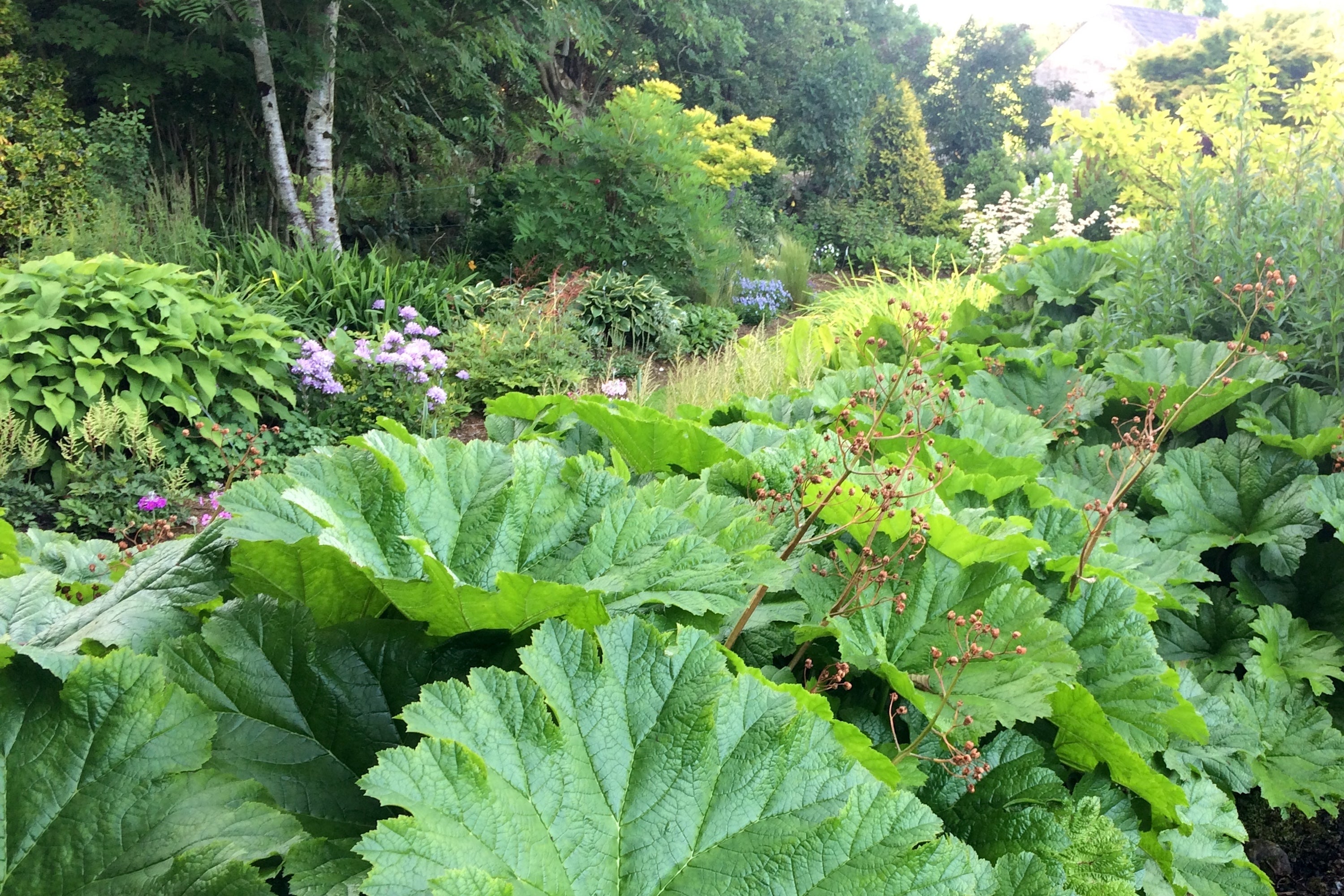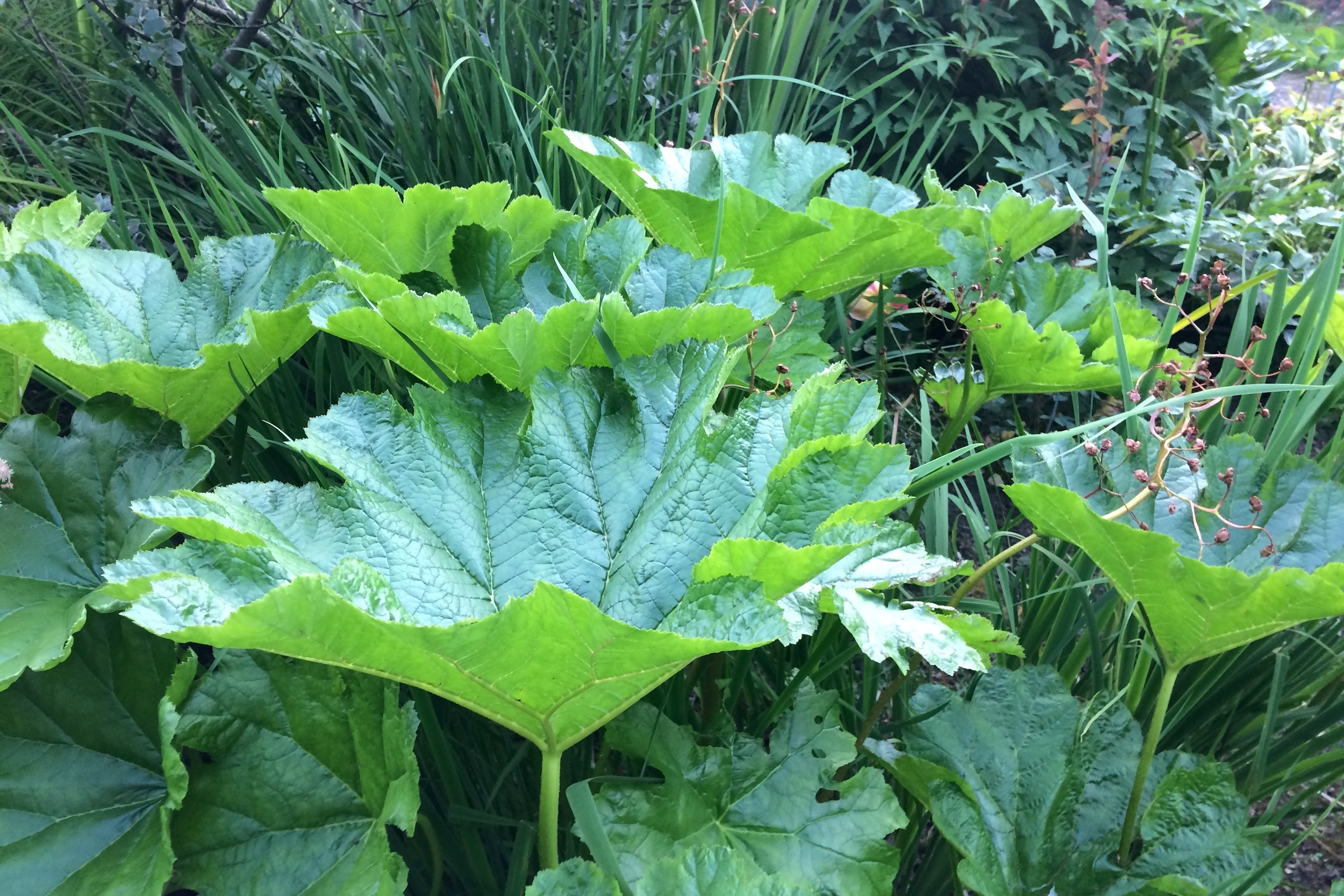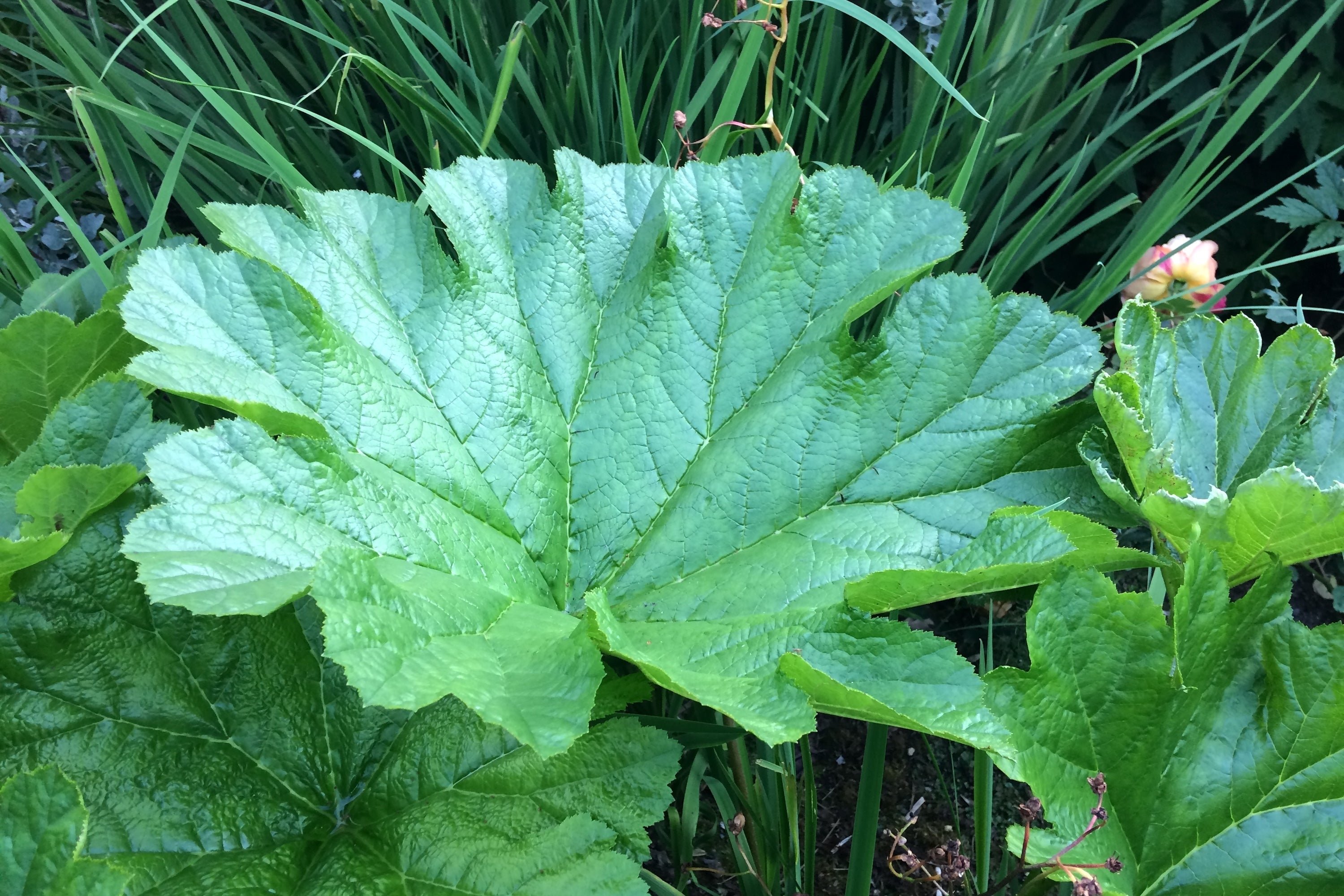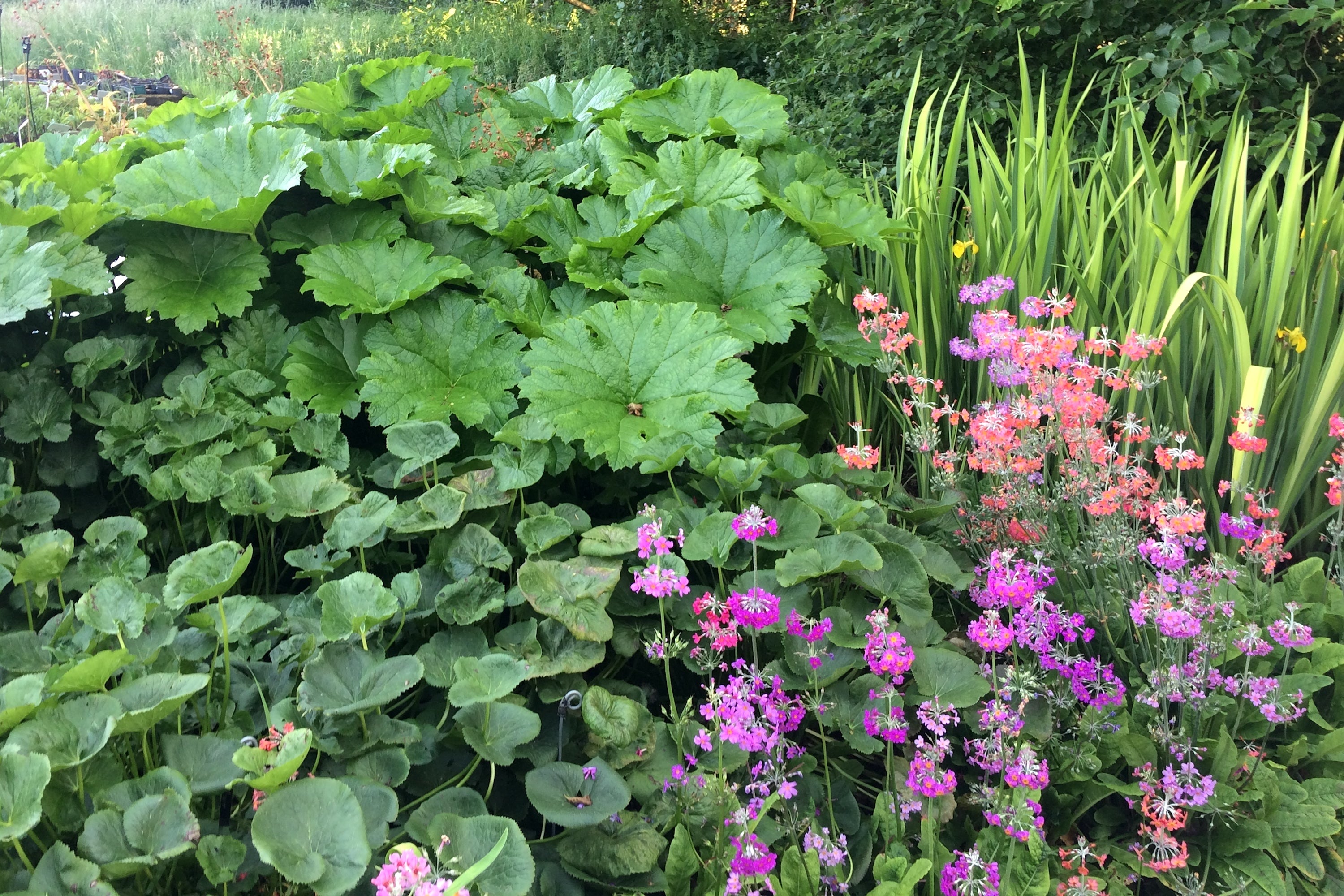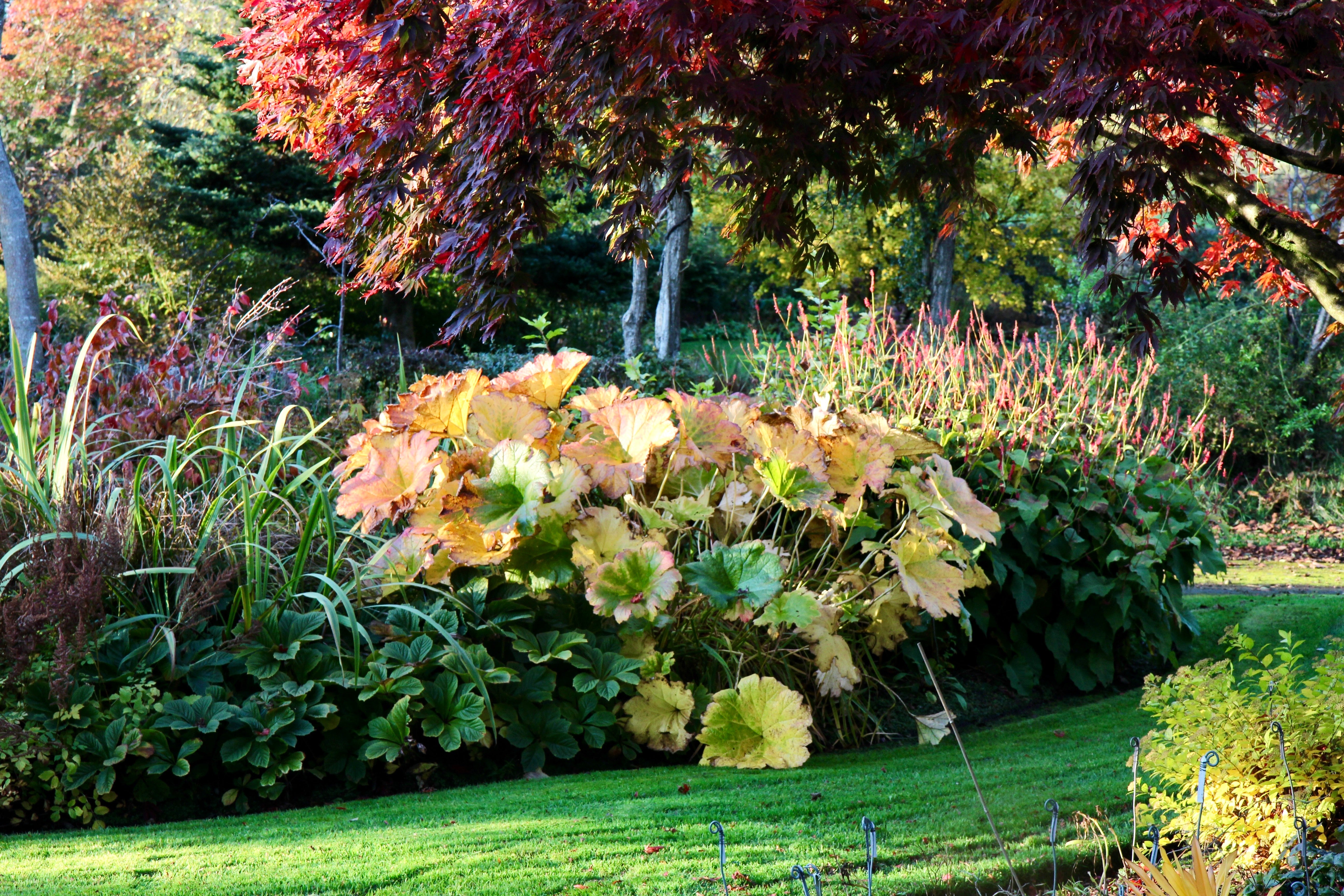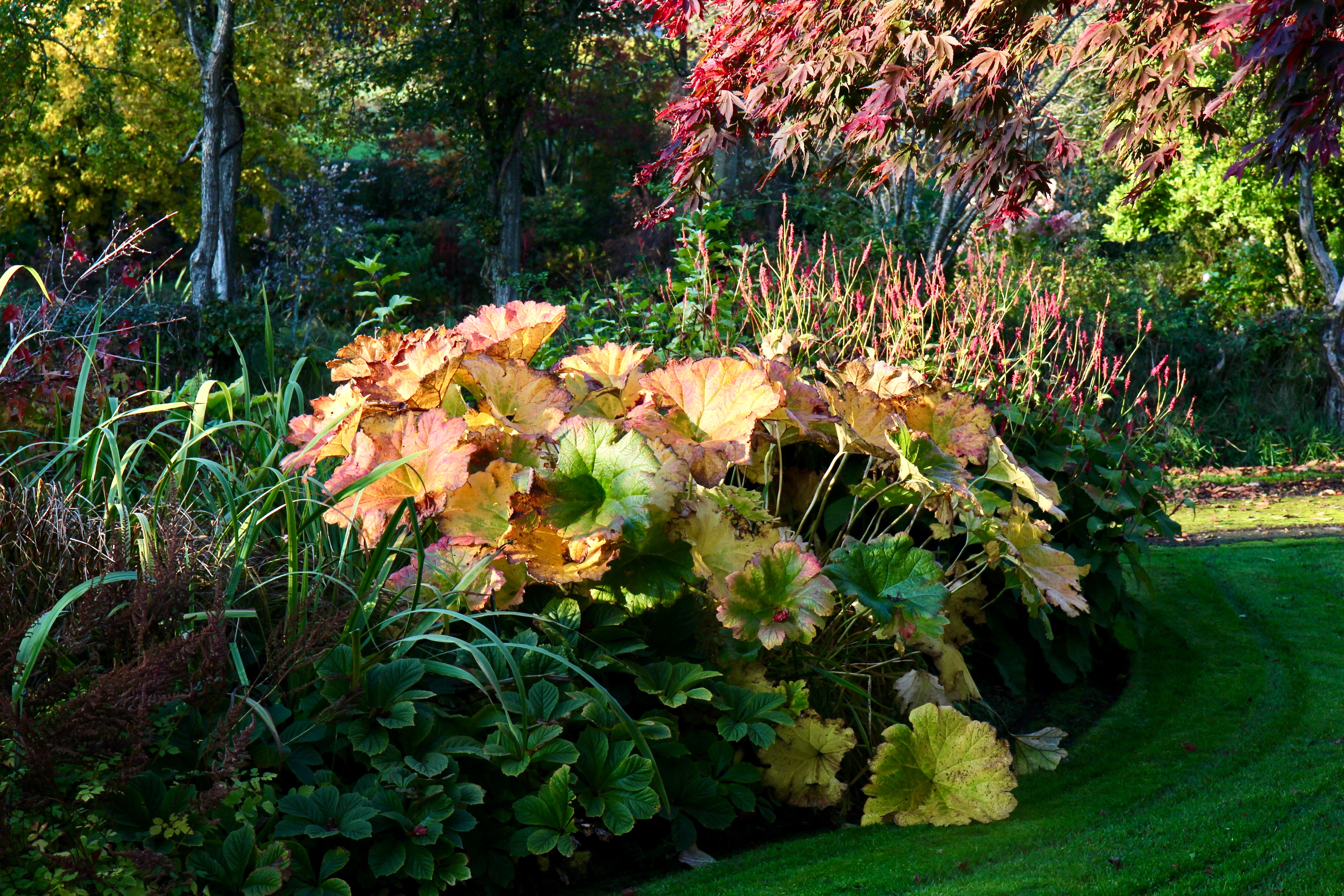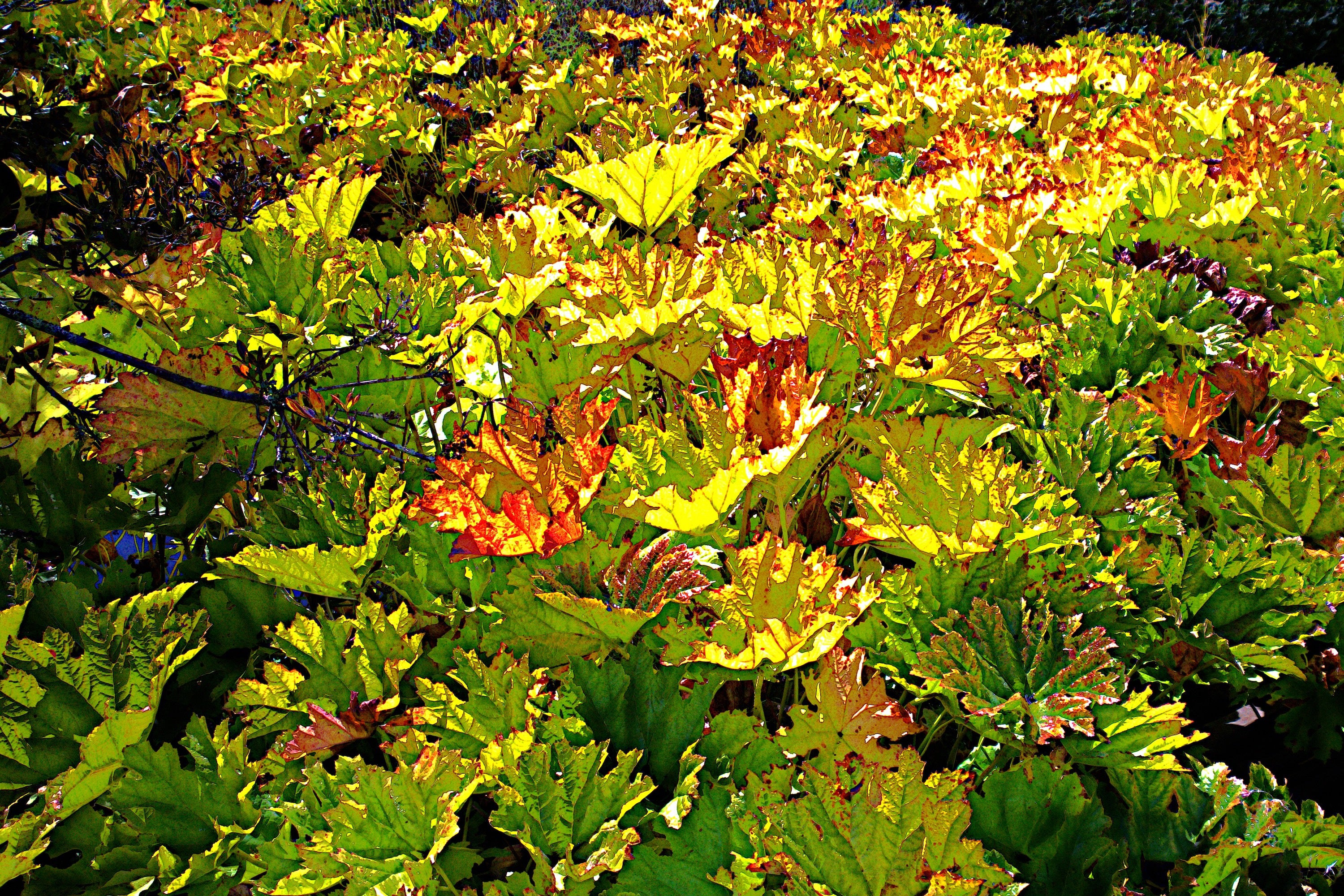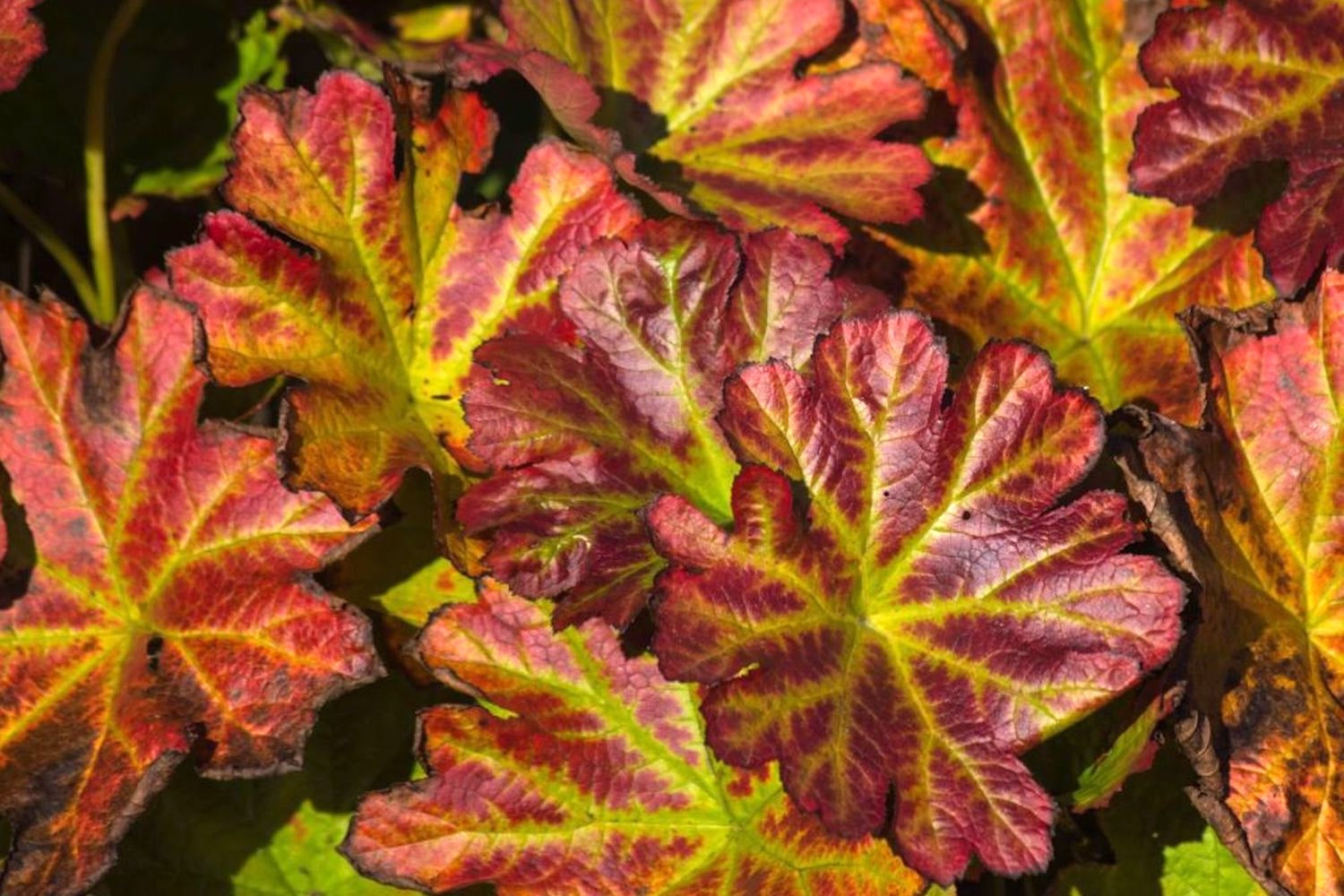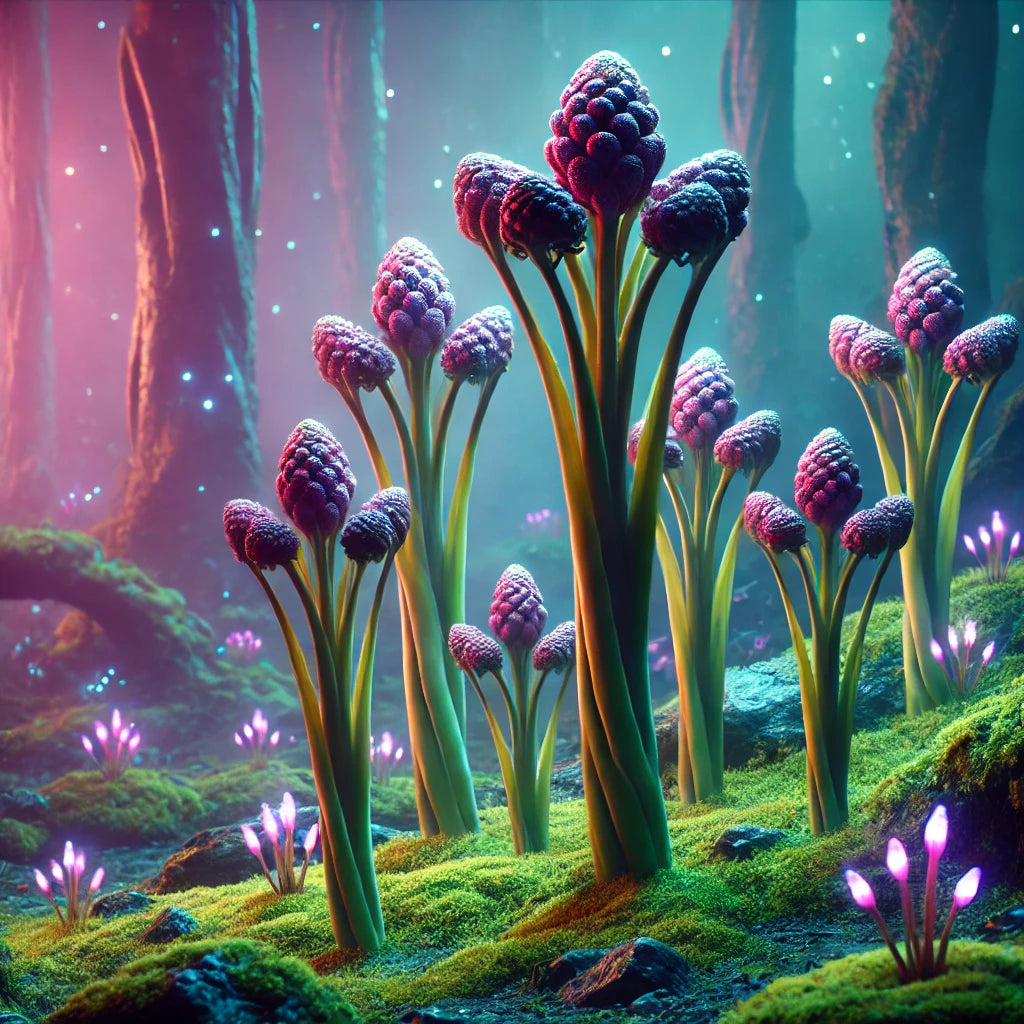Darmera peltata
Approx. 0.5 litre pot
About this cultivar:
Hmmmm, see below!
- Position: Full sun, partial shade
- Soil: Almost any soil that is reasonably wet, wet soil, grows well in Ballyrobert!
- Flowers: March, April
- Other features: Royal Horticultural Society Award of Garden Merit (RHS AGM), Waterlogged
- Hardiness: H6 - Hardy in all of UK and northern Europe (-20 to -15°C), Fully hardy - grows well in Ballyrobert!
- Habit: Clump forming
- Foliage: Deciduous
- Height: 105 to 150 cm (3.5 - 5 ft)
- Spread: 60 to 90 cm (2 - 3 ft)
- Time to full growth: 2 to 5 years
- Plant type: Herbaceous Perennial, bog
- Colour: Green
- Goes well with: Iris, Rodgersia, Caltha and Primula, like in the photos, but you also use it by ponds and woodland. Or try Astilbe or large ferns.
About this genus:
Darmera peltata is a slowly spreading rhizomatous perennial native to mountain woodland streamsides in the western United States. Once known as Peltiphyllum peltatum and Saxifraga peltata it is the only species within the genus Darmera (Saxifragaceae family).
Recognizing that Saxifraga was an improper genus, the German botanist Heinrich Gustov Engler (1844-1930) reclassified the plant in 1891 as Peltiphyllum peltatum, only for it to be reclassified again in 1899 as Darmera peltata by another German botanist, Andreas Voss (1857-1924). The genus name commemorates the German botanist and horticulturist Karl Darmer (1843-1918).
The species name is a reference to ‘pelt’ from the Greek 'Pelte' meaning shield and describes what is called a ‘peltate’ leaf arrangement. In a pelate arrangement the leaf stem is attached to roughly the centre of the leaf – nearly the same location as where a hand would grip a shield. The common name is umbrella plant or Indian Rhubarb (apparently the leaf stems are edible).
In late spring flower clusters emerge before any leaves appear. The flowers are on stems up to 2m long and slowly change from pink to off-white with age. It has been said the floral arrangement is vaguely reminiscent of Primula japonica, the Japanese Primrose. However, I think they look much more exotic – like something from outer space! I got ChatGPT to rustle up some images of a space Darmera- see below!
After the flowers fade the leaves begin to emerge. The long stems hold the leaves facing upwards so they often collect and hold small pools of rain water - a wonderful effect! They then turn a beautiful bronze in autumn and eventually die back to ground level.
In gardens, Darmera flourishes in pond margins and bog gardens, where it forms an imposing upside down umbrella-like clump. It is suited to smaller gardens where there is no room for Gunnera manicata or Gunnera tinctoria, which are similar in appearance, but much larger and much harder to manage! I think of it as a mini-Gunnera. Needs wet soil though, or else the leaves will dry out.
In 1993 it gained the Royal Horticultural Society's Award of Garden Merit. I think it looks great with Iris, Rodgersia, Caltha and Primula, like in the photos, but you can also try it by ponds and woodland. Or try Astilbe or large ferns.

